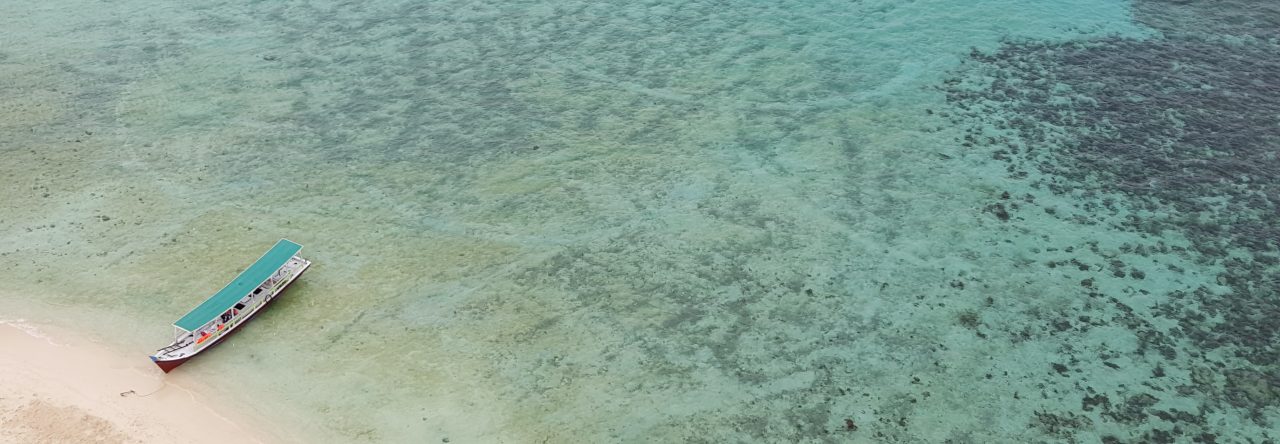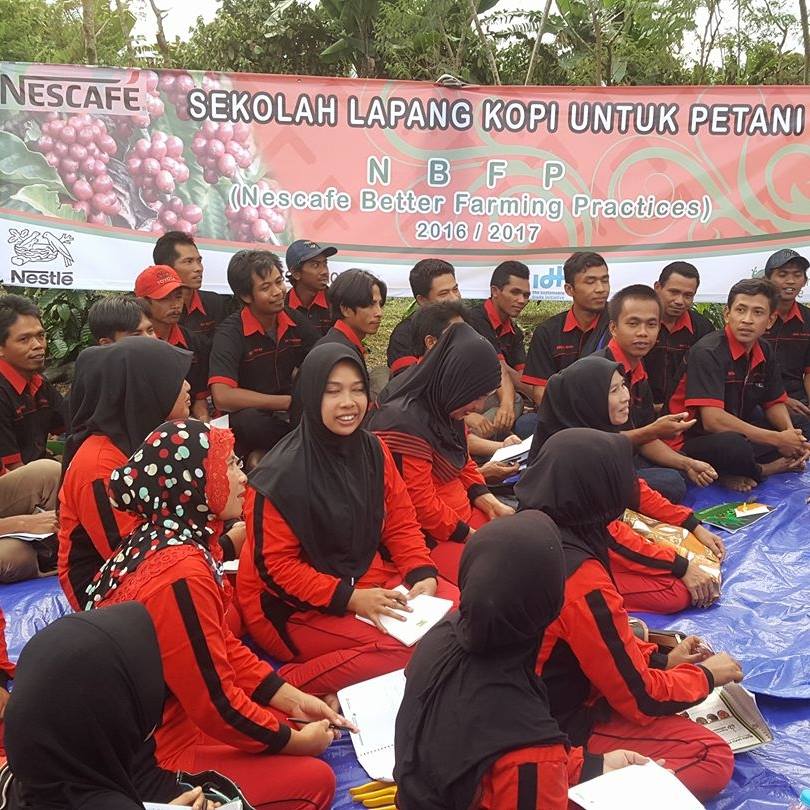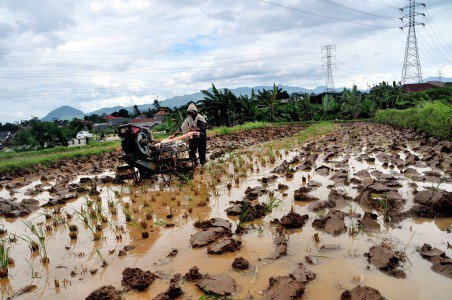Antara News, 4 September 2019
Oleh Fitrian Ardiansyah dan Tissa Aunilla *)
*) Fitrian Ardiansyah adalah Pendiri dan Ketua Pengurus IDH-Inisiatif Dagang Hijau, dan Tissa Aunilla adalah Pemilik Pipiltin Cocoa
Original link: https://www.antaranews.com/berita/1044262/cokelat-ransiki-yang-umami-melindungi-bumi

Jakarta (ANTARA) – Umami (gurih), creamy, earthy, nutty mungkin bukan deskripsi yang umum dipakai untuk menceritakan rasa cokelat. Terutama apabila rasa itu timbul dari biji cokelat hasil fermentasi yang berkualitas tinggi, tanpa ditambahkan suatu perasa apapun, dan rasa tersebut ternyata ada di cokelat Ransiki dari Papua Barat.
Secara umum, Indonesia terkenal sebagai negara yang kaya akan hasil bumi. Tantangannya, hasil bumi ini diharapkan bisa memberikan nilai tambah bagi petani dan produsen di rantai pasok serta juga produk yang dihasilkan punya kualitas yang bagus dan ramah lingkungan sehingga diterima pasar dunia. Cokelat Ransiki sepertinya bisa menjawab tantangan ini.
Nama Cokelat Ransiki sendiri diambil dari nama daerah penghasil biji kakao (cokelat) di Kabupaten Manokwari Selatan, Provinsi Papua Barat. Pemilihan nama ini bertujuan untuk mengingatkan bahwa petani kakao dan pelaku usaha cokelat harus berkembang bersama dan saling membantu.
Nama koperasi yang dibentuk pekebun cokelat Ransiki seakan-akan diciptakan untuk memberikan semangat lebih untuk mengutamakan kesatuan dan kerjasama tim untuk membuat perkebunan cokelat di sana lebih maju: “Eiber Suth”, yang artinya kesatuan untuk bangkit.
Pemilihan nama Cokelat Ransiki setidaknya akan selalu mengingatkan pelaku usaha di rantai pasok untuk terus berkomitmen membantu dan berkolaborasi dengan pekebun kecil seperti yang tinggal di Ransiki, baik dari komitmen pembelian, dukungan teknis dengan mitra lainnya untuk upaya peningkatan produktivitas, kualitas dan keberlanjutan produksi kakao.
Meningkatkan produksi
Kerja sama antara pekebun, pelaku usaha, pemerintah dan mitra lainnya di rantai pasok kakao menjadi keniscayaan terutama bila Indonesia ingin tetap menjadi produsen penting di dunia.
Indonesia sempat menempati peringkat ketiga di dunia dengan tingkat produksi kakao 350.000 ton per tahunnya di tahun 2014. Namun, saat ini Indonesia hanya ada di urutan keenam dengan tingkat produksi 175.000 ton per tahun (2018), jauh sekali dari tingkat produksi di tahun 2008 yang bisa mencapai 620.000 ton.
Dengan kapasitas proses pengolahan biji kakao sekitar 400.000 ton, terutama yang berada di Sulawesi dan Jawa, peningkatan produktivitas dan kualitas kakao bila bisa didorong, tentunya merupakan suatu upaya yang ditunggu oleh industri cokelat nasional.
Namun, sekitar 1,5 juta hektare lahan yang ditanami dengan komoditas tanaman kakao, termasuk di Papua Barat dibudidayakan oleh pekebun kecil, sehingga aspek keberlanjutan atau kelestarian kakao tidak akan dapat dicapai tanpa melibatkan dan/atau meningkatkan kesejahteraan pekebun kecil.
Inovasi dan skema yang membantu kapasitas pekebun (terutama dalam konteks peningkatan produktivitas melalui penyediaan bahan tanam yang unggul, pengelolaan lahan dan budidaya yang lebih baik melalui pendampingan intensif, serta penguatan organisasi petani atau koperasi) akan menjamin keberlanjutan sektor kakao.
Selain itu, peningkatan kesejahteraan pekebun kecil kakao menjadi kunci agar kakao bisa dikembangkan lebih produktif (sehingga memberikan insentif bagi petani). Namun, hal ini hanya bisa dilakukan bila opsi penghidupan dan kewirausahaan yang berkelanjutan dikembangkan bagi desa tempat petani kakao tersebut tinggal, seperti di Ransiki.
Pelaku usaha, seperti Pipiltin Cocoa dibantu mitra pembangunan seperti IDH (Inisiatif Dagang Hijau), dapat mendukung pemerintah, pembeli kakao lainnya dan lembaga keuangan mengembangkan skema dan intervensi yang tepat sehingga tercipta ekosistem ekonomi kakao yang terintegrasi dari hulu (pekebun) ke hilirnya (fasilitas pemrosesan, pembeli, investor sampai ke konsumen).

Rantai pasokan
Dalam rantai pasok tersebut, sangat penting bagi pekebun kecil untuk mengetahui peran mereka terutama untuk menjaga dan meningkatkan kualitas bahan baku kakao, yang akan digunakan untuk proses produksi cokelat.
Kualitas bahan baku yang dapat dipertahankan dari daerah masing-masing dapat memberikan kebanggaan bagi pekebun dan daerah mereka apalagi bila bisa diakui di tingkat global sebagai produsen biji kakao yang berkualitas.
Sebagai tahapan awal penyediaan insentif bagi pekebun, misalnya, 10 persen hasil penjualan Cokelat Ransiki koleksi tertentu akan disumbangkan ke koperasi pekebun sehingga insentif langsung ini bisa memacu semangat pekebun yang pada gilirannya bisa mengembangkan produksi kakao, dan tentunya diharapkan berkontribusi bagi kesejahteraan petani.
Hal ini juga dilakukan dengan tujuan agar pekebun mempunyai relevansi ke pasar, dan mereka merasakan langsung kenaikan dan penurunan penjualan di suatu masa tertentu, sehingga lebih mempunyai peran aktif dalam pengembangan kualitas produksi.
Tuntutan pasar atau konsumen juga perlu dicermati. Saat ini, baik untuk produksi umum apalagi fine flavor cocoa (cokelat dengan rasa tertentu), kakao yang diproduksi haruslah bisa memenuhi standar kualitas dan rasa tertentu.
Hal yang sangat menguntungkan dari hasil roasting biji cokelat Ransiki ini adalah ditemukannya rasa yang sangat luar biasa enak dan unik. Cokelat Ransiki ternyata memiliki karakter rasa umami. Rasa ini, ketika dikonsumsi merangsang semua reseptor rasa di lidah. Orang yang memakannya akan merasakan rasa gurih, creamy, earthy dan masih banyak lagi.
Selain itu, walaupun tanpa ditambahkan susu, rasa cokelat Ransiki seakan-akan sudah memiliki rasa susu yang mudah meleleh di mulut, karena menggunakan cocoa butter (mentega cokelat) alami didalamnya. Karenanya, walaupun kadar cokelatnya 72 persen dari satu chocolate bar Ransiki, namun cokelat ini memiliki rasa pahit yang cukup mild, tidak seperti dark chocolate pada umumnya.
Tuntutan pasar lainnya adalah kakao yang diproduksi harus lebih memperhatikan unsur perlindungan lingkungan dan sosial. Dalam konteks lingkungan hidup (seperti juga Cocoa and Forest Initiative di tingkat global), pengelolaan budidaya kakao di Ransiki diharapkan tidak menimbulkan kebakaran lahan, degradasi hutan dan ekosistem lainnya, apalagi deforestasi (penggundulan hutan).
Penyangga hutan
Satu peluang yang menarik di Ransiki adalah budidaya kakao bisa dianggap sebagai buffer (penyangga) Pegunungan Arfak, yang sekaligus merupakan hutan asri dan habitat bagi satwa endemic seperti burung cenderawasih Vogelkop.
Budidaya kakao di daerah penyangga ini bisa disinergikan dengan perlindungan hutan, dengan mengusung model peningkatan produktivitas sekaligus perlindungan hutan (production-protection), terutama dengan sistem agroforestry yang tepat. Pekebun kakao yang produktif dan peduli lingkungan, pada gilirannya dapat menjadi penjaga hutan yang sangat efektif.
Lebih lanjut, model production-protection ini bila dikembangkan secara baik akan sangat menarik bagi investor dan pembeli non-konvensional atau investor hijau yang memang selalu ingin melihat sisi dampak positif lingkungan yang bisa dipromosikan di pasar nasional dan apalagi dunia.
Namun, model ini memerlukan kerjasama banyak pihak dan komitmen nyata. Terlebih, bila semua pihak bisa memastikan bahwa pengembangan komoditas kakao di kawasan penyangga menjadi produktif dan mempunyai nilai tambah dan sekaligus memastikan pekebun kakao tidak melebarkan cakupan lahannya ke dalam hutan ataupun mengganti tanaman kakaonya menjadi tanaman lainnya yang lebih ekspansif.
Pemberdayaan
Tuntutan pasar lainnya biasanya fokus ke aspek sosial. Dalam pengembangan kakao yang berkelanjutan, suatu model yang dikembangkan di Ransiki dan tempat lainnya di Indonesia harus mencakup aspek pengembangan masyarakat setempat, pemberdayaan perempuan, pengentasan kemiskinan dan/atau malnutrisi.
Tuntutan ini sebenarnya sangat relevan dengan keinginan masyarakat asli Papua, yang ingin agar pengembangan komoditas atau ekonomi di tempat mereka hidup bukan hanya menyejahterakan masyarakat namun juga memberikan kebanggaan dan meningkatkan harga diri masyarakat Papua.
Penguatan koperasi, kelembagaan masyarakat kampong dan adat, dukungan pemerintah setempat dan pelaku usaha serta mitra pembangunan di Ransiki dan sekitarnya menjadi kunci sehingga model yang dikembangkan saat ini bisa berkontribusi kepada tujuan mulia di atas.
Terlebih lagi, model tersebut, bila berhasil, bisa kemudian direplikasi atau dikembangkan di skala yang lebih luas untuk menjamin cakupan konsep untuk sektor kakao berkelanjutan diadopsi oleh banyak pihak. Dukungan masyarakat luas, bahkan sampai pembeli juga penting untuk memastikan keberlanjutan upaya ini.
Secara jelas terlihat bahwa untuk memastikan keberhasilan dan keberlanjutan pengembangan model kakao atau cokelat Ransiki, aspek peningkatan produktivitas sekaligus perlindungan sosial dan lingkungan perlu didorong secara seimbang dan didukung banyak pihak.
Cokelat Ransiki hanyalah suatu model awal untuk mendorong kemitraan tersebut, yang mengaitkan pekebun, pelaku usaha, pemerintah dan mitra pembangunan. Ransiki, di Kabupaten Manokwari Selatan, Provinsi Papua Barat, bisa menjadi pemimpin dalam upaya transformasi menuju kakao lestari di negeri tercinta ini.
Indonesia, sebagai negara produsen kakao penting di dunia, dan semua yang terlibat –dari pekebun sampai konsumen– mempunyai kesempatan memastikan transformasi positif di sektor kakao terus berlanjut lewat inovasi-inovasi dan model-model yang diterapkan di Ransiki dan di sentra kakao di seluruh nusantara.
Jadi, ketika menikmati cokelat yang terhidang di meja, bukan hanya nikmatnya cokelat yang dirasakan, namun juga memberikan senyum bagi pekebun Indonesia dan juga lingkungan dan ekosistem alami tetap asri dan terjaga.



